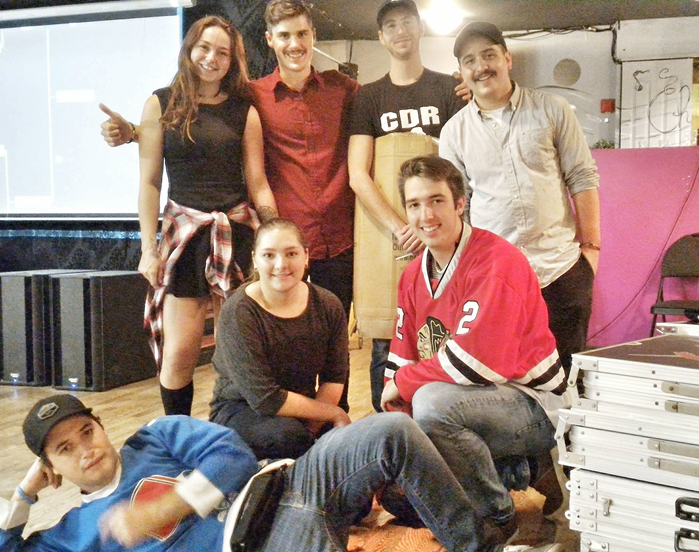Following the Evolution of Student Projects with Snapchat
I currently teach the course Management Methodologies in the Business Technologies Program. It takes place in the 5th semester and it acts as an integrative activity. Within this course, students put into practice the theoretical notions taught in event organisation, with the objective of raising money for a foundation of their choice. It’s their occasion to demonstrate the competencies they have developed in the areas of planning, organisation, management and control during their studies.
The projects are numerous and it is difficult for me to ensure follow up for all of the events. In fact, these events often taken place outside of class hours (evenings and weekends), in addition to being held at a considerable distance from my home. I had the idea of overcoming this limitation by using an application that allows users to share photos and videos and is very popular with those from 14-25-years old: Snapchat.
While surveying my group, almost my entire class had already downloaded this application and used in on a regular basis.
This application is available on mobile devices of iOS and Android. The particularity: there is a limited amount of time to watch the received content. In other words, the photos and videos exchanged are only available by the receiver for a short period of time, between 1 to 10 seconds. When time runs out, the content disappears definitively from Snapchat servers. We can, of course, keep traces of the images by taking screenshots. However, I inform the students if this is the case. In addition, the students must all the same take and keep photos that are included in the final report.
Following a Project and Giving Feedback Rapidly
In my course, each team (made up of 4 students) develops a project, which makes 14 events to follow. The students put themselves in the position of the manager and of the employee (who oversee the support and logistics of the project). They therefore have 2 different visions of the same event. Thanks to Snapchat:
- The organisers and the employees can communicate with me, and this is done rapidly.
- I can give them feedback in a very short period of time.
- They can transfer videos and photos of the various steps of the realisation of their event. I can also ensure a better follow-up of the teams and obtain qualitative data that allows me to better evaluate the teams.
I proceed with an intersected evaluation: I receive photos and videos from the organisers and from the employees participating in an event. It is therefore possible for me to obtain information on the entirety of the event which is much less biased. For example, during a comedy gala, the organisers can decide to only show me the good aspects of their event, such as: the contest draws, the comedians, and the crowded venue. However, the employees can send me photos of moments of dead air, the room preparation or even the little snags in the evening. As the photos and videos are not saved, the students feel more at ease sharing the content.
Someone asked me once if the short-lived side of the application could be an inconvenience. Not really, as the videos are available anytime: I can therefore watch them Sunday morning while having a coffee, even if the event took place Saturday.
Some Visual Examples

Presentation for young entrepreneurs.

Evening of various tournaments and friendly competition.
The Types of Project Outcomes: An End to Hunger
At the end of the course, during a press conference that took place on December 8th, 2016, the students gave close to $23 489,15 to the Fondation du Collège Lionel-Groulx and to the Fondation Resto-Pop, a record donation from the result of these projects!
Concretely, with an amount of $13,000 donated to the Fondation Resto-Pop, close to 3200 meals will be served to 16 impoverished students in primary and secondary school. These students will be served a complete and healthy lunch, developed by a chef and a nutritionist, for 1 year.
Planning for Christmas Hampers
On the side of the Fondation du Collège Lionel-Groulx, the funds donated will increase the number of Christmas Hampers for the most impoverished students of the College. This year, my students decided to try to put “an end to hunger” through the efforts of their various initiatives.
The reaction of the students was positive and I adored the advantages offered in the follow-up of my project.
This year, I was able to test Snapchat a bit at the last minute. It goes without saying that I will have to include this new ICT practice in a more developed manner within this course next year. I will also have to make sure I have more detailed terms and conditions with the students for the elements that I conserve, such as traces of their work obtained through Snapchat.
Do you use any social media in your classes ? If so, tell us about it in the Comments below!

